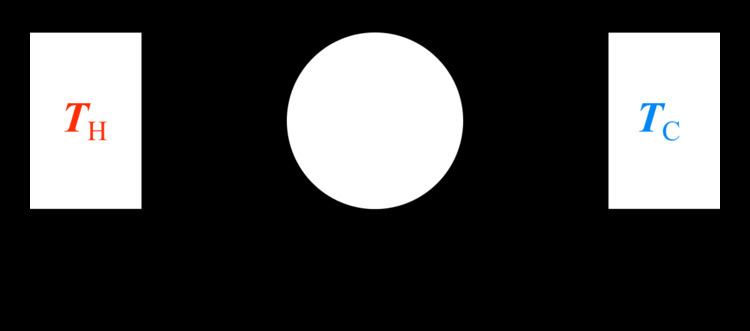 | ||
This article is a summary of common equations and quantities in thermodynamics (see thermodynamic equations for more elaboration). SI units are used for absolute temperature, not Celsius or Fahrenheit.
Contents
Definitions
Many of the definitions below are also used in the thermodynamics of chemical reactions.
Equations
The equations in this article are classified by subject.
Entropy
Statistical physics
Below are useful results from the Maxwell–Boltzmann distribution for an ideal gas, and the implications of the Entropy quantity. The distribution is valid for atoms or molecules constituting ideal gases.
Corollaries of the non-relativistic Maxwell–Boltzmann distribution are below.
Quasi-static and reversible processes
For quasi-static and reversible processes, the first law of thermodynamics is:
where δQ is the heat supplied to the system and δW is the work done by the system.
Thermodynamic potentials
The following energies are called the thermodynamic potentials,
and the corresponding fundamental thermodynamic relations or "master equations" are:
Maxwell's relations
The four most common Maxwell's relations are:
More relations include the following.
Other differential equations are:
Quantum properties
where N is number of particles, h is Planck's constant, I is moment of inertia, and Z is the partition function, in various forms:
